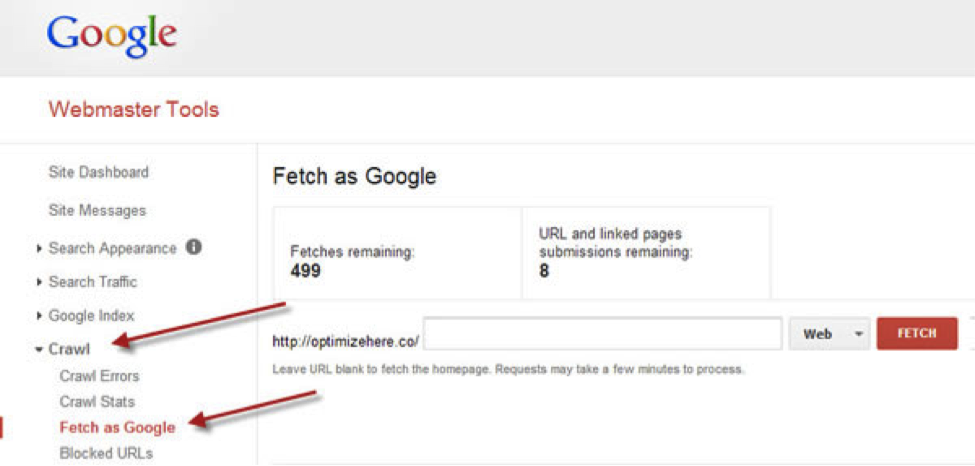It’s important that you make sure your site is indexed properly with Google so that all of your content is included when it comes time to decide what will be ranked where for search queries. Many companies assume that this will happen the minute they create a website, but that is not always the case. It’s important to constantly check and make sure that Google is indexing your site so that you aren’t missing any opportunities. Indexing is the most important first step for any website (even before SEO, which would mean nothing if your site wasn’t being indexed!), so you not only want to make sure you’re site is being indexed in general, but the faster indexing works the better. Faster indexing means faster results.
A Little Bit about Google Indexing and Getting Started
According to a HigherVisibility article, “it helps to think of indexing like you would think about reading a book. There is an index that tells you where and how you can find different information in that book—by category, chapter, references, etc. This works the same way when it comes to Google. Google crawls every webpage on the Internet to create an index.” The Google bots can then crawl through their index each time someone types something into the search box and then determine the best results based on categories and keywords.
Before worrying about how fast your site is indexed, you have to make sure it’s being indexed properly in the first place. There are three components to this that you need to understand in order to check:
- Create an XML Sitemap. Creating an XML sitemap is the most important thing for indexing. Many website templates and systems will already create a sitemap for you, but if you need to create your own I recommend visiting this article. A sitemap is essentially something that will list out all of the pages of your website to the search engine bots so that they know each of those pages exists (hence the name site “map”). A sitemap is usually updated automatically each time you add a new page to your website in order to ensure that that page is included in Google index. The Google XML Sitemaps plugin is a great option if you use WordPress and don’t know whether or not you have a sitemap or whether or not the sitemap is working. This will create and update a sitemap for you.
- Have a Google Webmaster Tools Account. You have to make sure that you submit your sitemap to your Google Webmaster Tools account.You can visit the Google Support page here to learn how to upload a sitemap to your account.
Again, the above two points are just the basics of indexing your site in general. In other words, they cannot be missed. Indexing needs to be your first step, whether it happens quickly or slowly, in order for any of your SEO efforts to even matter.
How the Fetch as Google Tool Works and How to be Successful
The Fetch as Google tool was introduced back in 2011 and has been a staple for marketers ever since, but if you haven’t started with the tool yet don’t sweat it. It’s incredibly easy to get started and doesn’t take much effort. The tools basically allows you to see your website the way the Google bots see it. This includes the HTTP response returned by your server, date and time of your crawl request, HTML code, and the first 100KB of visible text on a page.
Follow the steps below to get started:
- Visit your Google Webmaster Tools account and select the site you’re questioning.
- Visit the Crawl section on your account (left-hand side)
- Click Fetch as Google and then Fetch.
You are allowed to fetch up to 500 URLs per week and can submit your URL to Google for re-indexing if your fetch was successful. You can visit this Support Page for more detailed information. Below is a screenshot from the HigherVisibility article that shows the tool in action:
In addition to helping your site get indexed faster, this tool can help you identify hackers, so it’s something to use every few weeks to make sure everything is running properly! Also keep in mind that indexing your site quickly is an entirely separate issue than page speed load time, which you can learn more about here.
A Few Other Options for Indexing Your Site Faster
While a sitemap and Webmaster Tools accounts are crucial and the Fetch as Google tool can help you speed things along, there are a few other, smaller ways to continue to speed up the process including:
- Earning More Inbound Links. Earning inbound links is important for several reasons, and while the last two points are more important for indexing purposes, this still helps. Popular websites that focus on content oftentimes get indexed more often, so earning links on those type of sites could help your page get noticed faster than if you had to wait your turn to be crawled.
- Utilizing Google+ Linking. Always put your new and updated content on your Google+ profile. Although Google has never made an official announcement, many experts have found that links here are indexed faster (likely because Google+ is run by Google). Even if this isn’t the case yet, it can’t hurt to be prepared for the future.
Do you have any stories about indexing your site faster? Are you having trouble creating a sitemap or getting your sitemap to work? Let us know your thoughts and questions in the comment section below.

